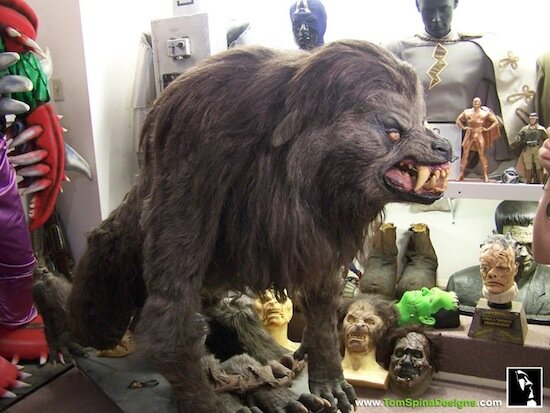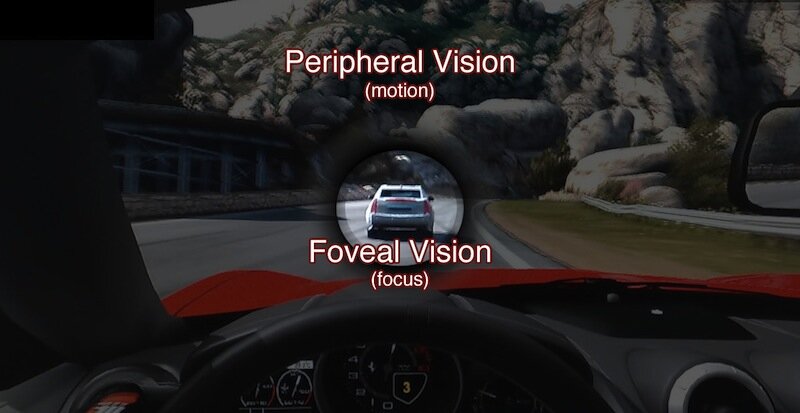I love horror films. I can’t get enough of them. Slashers, thrillers, creature features, you name it. After countless murders, mutants, and mayhem I still come back for more. It should be no surprise, therefore, that I have a deep love for games that try and scare me, and it is this love that angers me. I am angry, my friends, because there is a general lack of quality scary games. Let me rephrase that. There are a fair number of scary games, but there is, unfortunately, a general lack of scary experiences. There are exceptions, yes, but I want more than exceptions to the rule. The answer of how to make a scary game is actually quite simple:
Create scary situations for an Avatar with whom the player feels an Empathetic Connection.
Sounds simple enough, but simple sounding tasks are not always easy to execute. The bulk of the job lies in execution, and most games fail for one of two reasons: A misunderstanding of what the term “scary” actually means, and a failure to create meaningful empathy.
Scary Situations
Scary is not a monster; scary is not a place; scary is not a thing. Scary is a situation — it is context. The following is a completely empty and meaningless phrase: “I really want a scary monster for this level.” It says nothing of value, and has directed nobody to tasks of any meaning. This is doing it wrong. Allow me to illustrate.
Consider Sea World: you are peering through the giant window into the murky depths of a hammerhead shark tank. A poorly lit placard provides simple fact for a shark, who meanders his way through a school of small fish. The light filters through the water creating a blueish glow to your surroundings. It’s all very calm, peaceful, and filled with a sense of learning.

Now, imagine you are on the OTHER side of the glass. You have a cut on your thumb, and a thin trail of blood seeps into the water. You watch with a growing sense of dread, as your blood slowly dissipates like smoke. The hammerhead, smelling your blood, whips around in the water. Suddenly, all is not peaceful … In both scenarios the shark has not physically changed. Only the context has changed. Being in the tank with the shark is a “scary situation”.
So how do we create a scary situation? Ah, finally the right question. A scary situation is defined by two things: context and presence. Context is a hierarchy of threat responses (Suspense, Startling, and Tension), while Presentation is broken down into two design intentions (Unsettling and Threatening). Let’s start with presentation.
Presentation
The presentation of a situation is the look, feel and intentions of either the world or the actors. It is a message you convey to the player through specific shapes and silhouettes. When you say you want a “scary creature”, what you are really asking for is something that uses either unsettling or threatening designs (or some mix of the two).

A clear example is the difference between the Wolfman and the Werewolf. They are both, at their core, wolf-based lycanthropes, but they focus on very different presentations. The Wolfman, for example, is a distortion of humanity. When you look upon him you are fearful, aware that somewhere inside those eyes, is a man — intelligence. You see the humanity (or what little is left of it), and it is that disparity between what “should be” and what “is” that terrifies you. You are afraid because you can put yourself in its shoes and see it happening to you.

Conversely, the Werewolf is a complete lack of humanity. It is bestial rage and savagery. It is long salivating jaws and inhumanly sharp claws. It is the genetic memory we all have of being hunted by something smarter, faster and stronger than we are.
The concepts of unsettling and threatening designs are not limited to the object itself, though, as it is used to describe worlds, actions and intentions. Take the stereotypical amusement park. It’s a hot summer day, and the park is filled with families; a scene which brings fond memories of your local County fair, or your first trip to Disneyland. Now, picture yourself alone, at night, in the same amusement park. The people are gone; the lights are out except for a random flickering bare bulb, which casts unfamiliar and grotesque shadows. The only sound you hear is a lone carousel squeaking as though someone is slowly pushing it round and round and round. Suddenly, everything feels very wrong, it should not be so.
If you look at something and your reaction is to think something is dreadfully wrong or “should not be so”, then you are dealing with something that is unsettling. If you are dealing with imminent danger, it is something that is meant to be threatening.
- Unsettling — “Should not be so” — Moving shadows on a wall, children that know too much, the Brundlefly, Wolfmen, objects moving on their own, flickering lights, distorted humanity
- Threatening – “Imminent danger” — Jagged or sharp edges, sudden movement, loud sharp noises, dangling shackles, spiders, small things moving fast, an angry mob, an electric chair, complete darkness, bestial

One of my favorite horror films of all time is John Carpenter’s The Thing. It is a beautiful showcase of unsettling and threatening creatures and situations. There is a classic scene in the very beginning, where the alien, currently in dog form, is brought into the kennel with the other dogs. It is brilliant in both how the alien acts so “unlike” a dog and how the other dogs react to it. It walks in slowly and sits down perfectly still. Everything about its demeanor is screaming out that something is wrong. In addition, when faced with a threat, one assumes that the other dogs would attack and defend themselves, but instead they try to flee. Even going so far as biting the cage to escape. Eventually the alien begins to change shape. Sprouting long thin sharp legs, and tentacles flopping everywhere quickly. It transforms into a threatening menace. All of this combines into one of the most memorable scenes in movie cinema.
Context
Context is a hierarchy of threat responses: suspense, startling, and tension. At the lowest level is suspense. Suspense is a feeling of apprehension based on a perceived sense of loss from a known or unknown threat. Startling is the second stage, and it is the sudden appearance of a known or unknown threat. Lastly, at the highest level, is tension, which is the struggle for resolution, either through fight or flight, against a known threat. Note: you cannot have tension with an unknown threat.
Suspense
Apprehension is the core of suspense. Apprehension is created when you perceive (real or imagined) danger, but action is required. Return to the amusement park at night. There could or could not be anything truly threatening within the park; however, due to the unsettling scene we perceive that there is danger. A lone carousel slowly turning and creaking. Is someone turning it? Being alone we are exposed and weak. We have no protection, so our potential for loss is greater. To turn this from unsettling to suspenseful, though, we must demand action from the player. Being forced to cross this deserted amusement park is going to be a nail-biting experience.
Startle
Startling someone is the easy road to creating a scary situation. There are a lot of ways to startle someone: loud noises, flashes of light, sudden darkness, gratuitous violence, or sudden movement. The number one issue with startling someone is diminishing returns. If a monster has dropped through the last four holes in the ceiling, it’s not going to startle me when I arrive at a fifth hole and a monster drops through. When something is truly unexpected, though, it can be very effective. The trick to effectively startling someone is in understanding how the eye works, and the difference between central (your focus) and peripheral (everything else) vision.

Central vision is very good at focusing on details. Since that is what it’s designed to do, it isn’t the best at sensing movement. Your peripheral vision, on the other hand, is great at detecting movement. There is an fantastic scene in the first resident evil where a dog jumps through a hallway window and scares the living crap out of the player. It’s supremely effective because the layout of the cameras and the design of the hallway is such that your center vision (focus) is drawn to the far end of the hallway, when suddenly something enters your periphery and, quite expectantly, you shit yourself. This concept of giving the player something to focus on to divert their attention from the true threat is the core tenant of how to Startle.
Tension
When a person is faced with a threat they have two options: fight or flight. I am going to either attempt to deal with this threat, or flee from this threat. Tension arrises when I must struggle to achieve either of these goals. If I can kill anything in one punch, it’s not exactly a struggle to deal with any threat. If I move significantly faster than a monster, then I don’t really have to struggle to flee from it. In either of those situations there is no tension. However, if my gun jams while a zombie is approaching me, or if a locked door blocks my path while being chased by some creature, then I must struggle and overcome some obstacle before I can achieve my goal.
All Together
The three contextual situations can be seen, in order, during another scene from John Carpenter’s The Thing. In this scene the characters and audience know that someone is an alien, but they do not know which one of them is the alien. McCready devises a test to see who could be the alien. By touching a hot needle to petri dishes of blood and seeing if it reacts, we can find the alien. Here we have the first stage: suspense. McCready must perform some action (test the blood) under the pressure of an unknown threat (someone could be a deadly alien). Carpenter let’s the suspense build and then cleverly distracts our focus through an argument between two characters. Suddenly, the blood jumps straight up and out of the petri dish: startle. This moment lastly only split second, and then the situation becomes a tense struggle. The threat is now known, and we must deal with it. Notice that McCready cannot get his flame thrower to work, so he must struggle to achieve his goal of dealing with the threat. If he had just pointed the flame thrower at the alien and blasted away, the scene would have had a great build up only to fall completely flat. Instead, through his struggle, it crescendos in a tense battle to destroy the alien. Masterfully executed.
Lastly, it should be noted that both suspense and tension are contingent upon an empathy. The loss of something valuable, the loss of one’s life, the loss of a loved one, etc. It only matters to the player if he cares. If he does not care, then there is no apprehension; with no apprehension, there is no tension. The act of being startled, however, is tied directly into our natural fight and flight reactions, so it generally lacks a requisite empathetic connection. You will notice, therefore, that most games tend to focus on startling you. This is, consequently, the easiest path to “being scary”, but it is not the best. Focusing only on trying to startle the player means you are missing out on a vastly more varied and meaningful tapestry of emotions.
Empathetic Connections
Scary situations are only the first part of the equation. Remember: the way to make a scary game is to create scary situations for an Avatar with whom the Player feels an empathetic connection. Human beings are wired to feel empathy for other beings. The idea that the more we care about someone the more concerned we are for their welfare is a concept so intuitively obvious as to almost go unstated, yet games rarely strive for any kind of connection. Strong narrative and strong characters are an integral part of delivering a truly frightening experience, and this is doubly important when making a game. The actions of the Avatar are a direct result of the inputs of the Player, so the potential for an empathetic connection is even greater. Do people love Jill Valentine because Resident Evil is a scary game, or is Resident Evil such a scary game because people care about Jill Valentine?
How to write a compelling narrative is a little beyond the scope of this discussion, but one thing I feel I can touch upon is the concept of Avatars versus Characters. When designing the protagonist there are two philosophies. Do you design your protagonist to be an Avatar, which makes them more generic. Or do you design your protagonist to be a Character, and give them more substance. A Character is someone you control and an Avatar is someone you become.
![]()
The concept of the Avatar and the Character is less a binary choice and more a sliding scale. At one end you have a white male in his mid twenties with short brown hair (everyman) and at the far opposite end of the spectrum you have a hyper-intelligent goldfish inside a mechanical suit. One is way more relatable than the other, and when making a scary game the more I can relate to the protagonist I play, the more empathetic I am going to be to their situations.
Do not confuse empathy with a lack of the fantastic, however; the key to empathy, or I should say the key to immersion, is in consistency. There is a great quote from Aristotle about story.
For the purposes of [story] a convincing impossibility is preferable to an unconvincing possibility.
Execution
There is no one single department that can execute these ideals alone. Every department must work together, and they must understand how their work affects the outcome. Some departments are more concerned with presence, while others are more concerned with context. Your concept department can create the most threatening monsters ever seen, but if the player is too powerful then there is no struggle (no tension). The sound department can create the most unsettling music you have ever heard, but if it plays while the character is traveling through a sunny park filled with people it will fall flat.
Effective execution requires the synergy of every department: game design, creature design, animation, world design, sound, and lighting.
- Game Design: The more you have to lose, the more you are afraid. What is the cost of dying? If I fear death, then I fear every encounter I have. Do my weapons break? If I can lose my weapons, then I fear every shot I take. Is ammo scarce? If I can run out of ammo, then I fear missing a shot. The limited inventory space and ammo in Resident Evil makes even a lone zombie a struggle for the player to deal with, and it is this struggle that creates the constant thread of tension.
- Creature Design: Bioshock has one of the more unsettling creatures in recent memory. The Little Sisters, with their glowing eyes and sing song rhymes, are the perfect example of something that should not be so. You feel sorry for them.
- Animation: How something moves is just as important as how it looks. The Iron Maiden from Resident Evil 4 (http://is.gd/f1u7O), with his uncontrolled jitters and creepy breathing, is unquestionably in my top 5 scariest monsters of all time. His constant hi-speed motion makes for a threatening presence (and you can’t go wrong with spikes…)
- World Design: Creature Design is important, but sometimes more can be said with a simple message written on a wall. Imagine the world of Bioshock again. The world itself is a huge threat, and the game does a good job of constantly reminding you through water dripping and cracks in the wall.
- Sound: The look of your world and the look of your creatures are both important, but sometimes you don’t need to show anything. Music and sound effects are just as important as every other aspect of the game. One of my favorite games, Condemned, (http://is.gd/f1u3I) does a great job in the opening levels of scaring the crap out of you with nothing more than a few barrels rolling along the floor, heavy breathing, and insane mumblings. In Condemned you are required to turn the lights back on (action), but you are apprehensive because of the perceived threat of the hobos. (damn hobos!)
- Lighting: Sometimes, it is less about what you can see, and more about what you can’t see. Light is a crucial factor in drawing the player’s eye, in making them feel uneasy, or, when placed in complete darkness, terrified. Shadows are also great for unsettling the player. The disappearing doctor in Bioshock (http://is.gd/f5jKc) is a great example of using lights and shadows to scare the player.
All of these different components are critically important to the complete whole. To neglect any single one diminishes the effectiveness of them all.
Summation
I will close with exactly what I said in the beginning. The answer to how to make a scary game is simple: create scary situations for an Avatar with whom the Player feels an empathetic connection. It really is that simple. I think people tend to focus too much on the “shock” style of fear, which has become prevalent in recent years. There is no question that it is effective and enjoyable when done well, but there are far more powerful emotional strings we can be pulling. The medium of video games has the potential for terrifyingly brilliant excursion into the unknown.